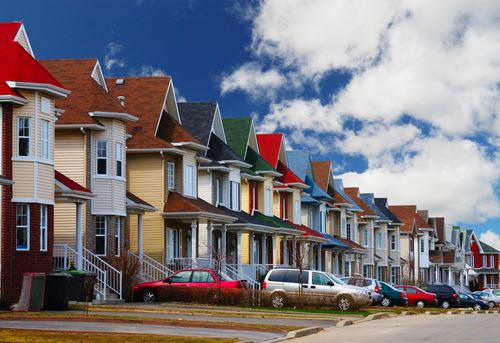I thought I knew what middle class meant.
I took it to mean most of working America – not people working as maids or gardeners or at fast-food restaurants, but just about everyone else: from plumbers to electricians, teachers to police officers, nurses to doctors, lawyers to entrepreneurs.
And had you asked me how many Americans make up the middle class, I’d have guessed it was at least 50%.
But according to Charles Hugh Smith, writing in the Of Two Minds blog, that’s not so. The actual number of middle-class Americans has dwindled over the years. Today, he says, “middle class” describes only 10% of U.S. households – the 10% just below the richest 10%.
“Households in the ‘bottom 80%’ are lacking essential attributes of a middle class lifestyle that were once affordable on a much more modest income,” Smith says.
Outside of income, he includes these criteria in his definition of “middle class”:
- Meaningful health insurance (not high-deductible, no-preventive-care “insurance”)
- Significant equity (25% to 50%) in a home
- An income-to-expense ratio that allows one to save at least 6% of their income
- Significant retirement funds in 401(k)s, IRAs, etc.
- A family’s ability to service debt and expenses over the medium term if one of the primary wage earners loses their job
- Reliable vehicles for each wage earner
- No reliance on the government to maintain one’s lifestyle
- Ownership of non-paper, non-real-estate assets, such as family heirlooms, precious metals, tools, etc., that one can transfer to the next generation – that is to say, “generational wealth”
- The ability to invest in kids (education, clubs, training, etc.)
- Leisure time devoted to physical, spiritual and mental fitness.
I’m guessing he designed these criteria to get the 80% number he was looking for. I doubt there was ever 50% of the population that could pass his tough test.
But the general point – that the middle class is considerably smaller than it was during my childhood – seems right to me.
According to Pew Research, real, inflation-adjusted income and net worth have risen only in the upper 10% of the population for the past 40 years.
Median wages have been flat, the Economic Policy Institute says, for that same period of time.
There are lots of reasons this happened. Many have to do with an unhealthy alliance between Big Government and Wall Street. If you’d like to know more about that, you should read my friends Bill Bonner and Doug Casey. My métier is building wealth despite difficulties.
My view on the current situation in the U.S. and the shrinking middle class is that there is very little you can do about it in the short term. And by short term I mean from now until you die.
So write letters to your congressmen, vote and/or run for Congress if you want to be part of a long-term solution.
In the meantime, you have a responsibility to yourself and your family. To live up to that responsibility, you must do three things:
- Spend the lion’s share of your productive time making money, not reading or writing or talking about the state of the economy and how you’ve been screwed.
- Earn more money. If you are an employee, you need to become a better, more valuable one. If you are an independent professional (plumber, lawyer, electrician, doctor, etc.), you need to learn how to double or triple your hourly rate. If you are a business owner, you’ve got to grow your business.
- Stop trying to be a great stock investor. Be a wealth builder instead. Becoming wealthy is about much more than buying and selling stocks. It’s about increasing your net investable wealth by investing in income-producing assets. It’s about creating secondary and tertiary cash streams, understanding how to diversify your investments, and avoiding wealth stealers. Getting wealthy requires much more than good stock picks. Figure out what those requirements are, and get to work.
Good investing,
Mark
